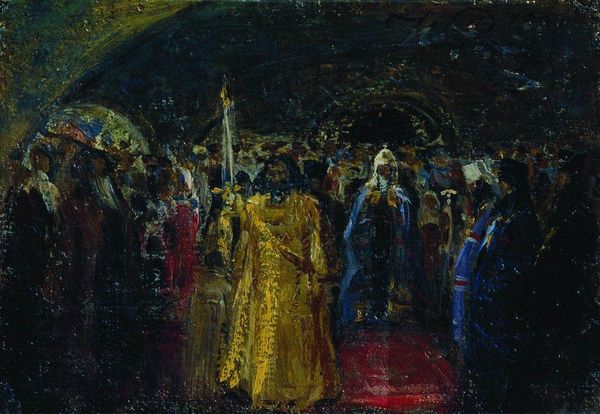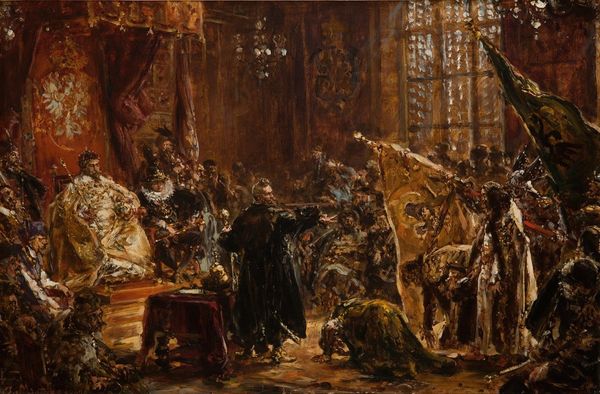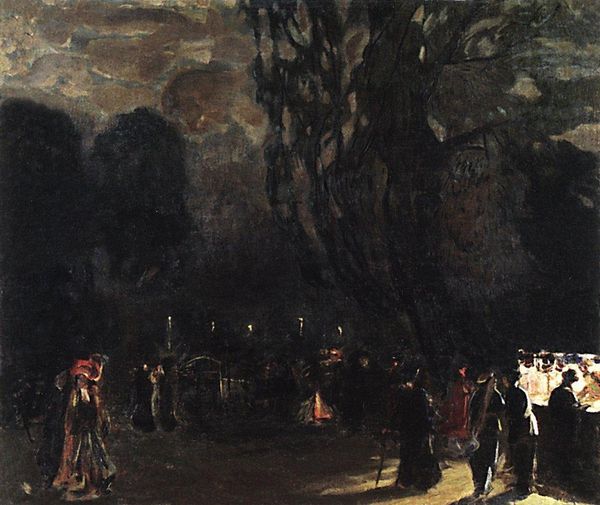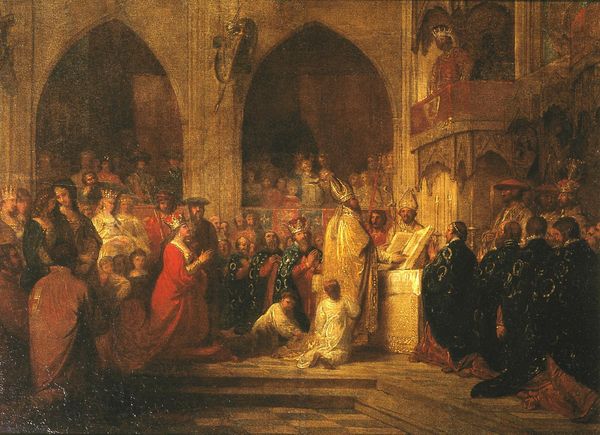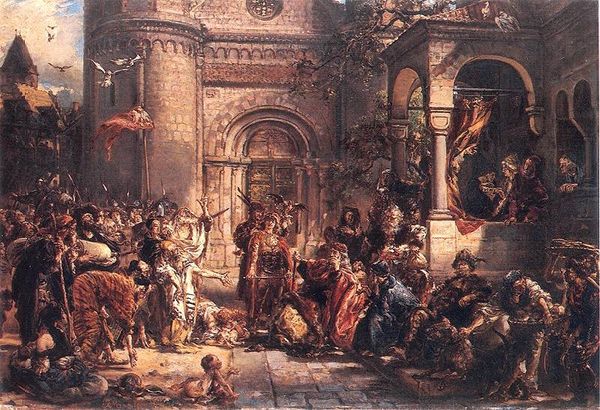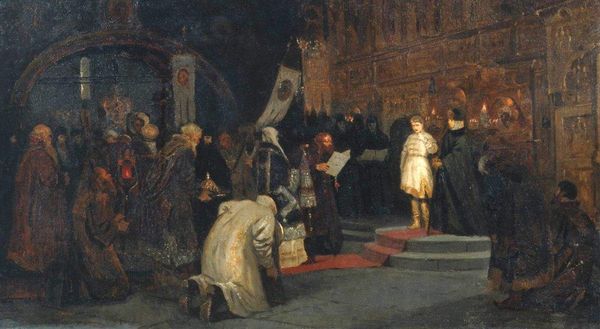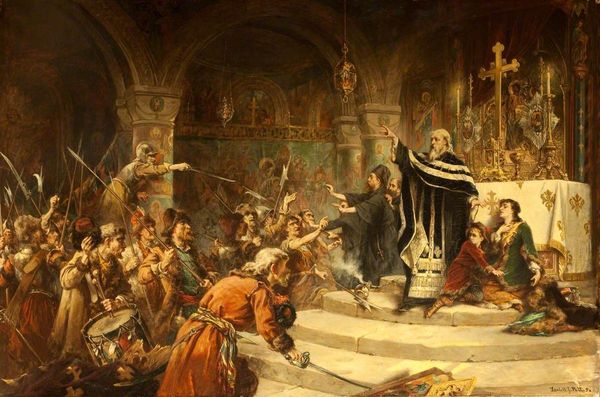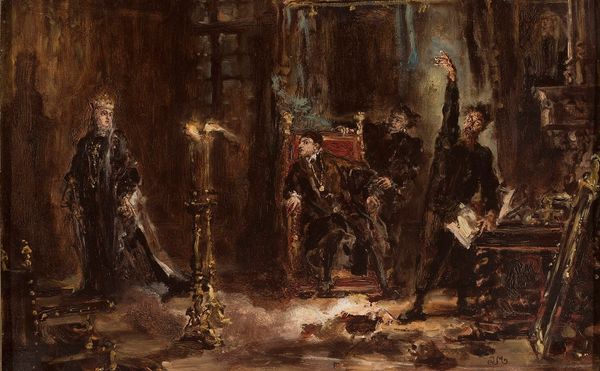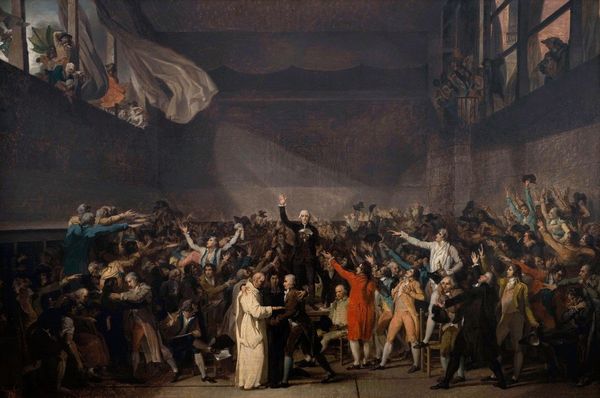
Dimensions: 91 x 116 cm
Copyright: Public domain
Curator: Eugène Delacroix painted "The Assassination of the Bishop of Liege" in 1829. It’s an oil on canvas depicting a violent event from the 15th century. Editor: My initial reaction? Chaotic and dim, yet theatrical. It feels like a stage lit only by candlelight. I am drawn to the emotion portrayed in each of the figures, capturing them right before a climax, it feels like the moment before everything stops. Curator: It certainly is theatrical! Delacroix was a master of Romanticism, and this work exemplifies the movement’s focus on intense emotion and dramatic historical events. The Bishop’s murder was a politically motivated act, with complex local roots. It's no accident it caught Delacroix's eye—he loved to play with such narratives. Editor: So how does this tie to socio-political realities in the late 1820s, when it was created? I mean, aside from pure drama, did the piece carry a weight in its time? Curator: Absolutely! Post-French Revolution, anxieties about power, authority, and societal disruption were palpable. Rebellions, assassinations… they tapped into those widespread fears of instability. It was a comment on justice, power, and the price of defiance. The setting of a grand, ornate room, likely meant to inspire stability, contrast with the action taking place. Editor: I agree, and the composition! See how Delacroix places the viewer right into the throng, almost like a participant? There is so much movement but there is something powerful about it. This angle makes you feel as though you are within a revolution taking place, which must of caught many viewers by surprise, considering most works usually show it in glory, instead of from within it. Curator: Yes, his technical choices amplified the emotional impact. Note the impasto and the visible brushstrokes, it makes you see that the work is not just an artwork, but something real and visceral. Editor: Definitely. Thinking about it, this isn’t simply an isolated historical tableau, is it? Delacroix is commenting on enduring themes. He's also, maybe unconsciously, questioning how violence becomes enmeshed in power struggles. Curator: Precisely. And these are precisely the struggles societies continue to grapple with even today. Editor: Well, this made me look at power in a very new light. Thank you. Curator: It was my pleasure. It shows just how multifaceted these older pieces can be and the diverse context they create.
Comments
No comments
Be the first to comment and join the conversation on the ultimate creative platform.
